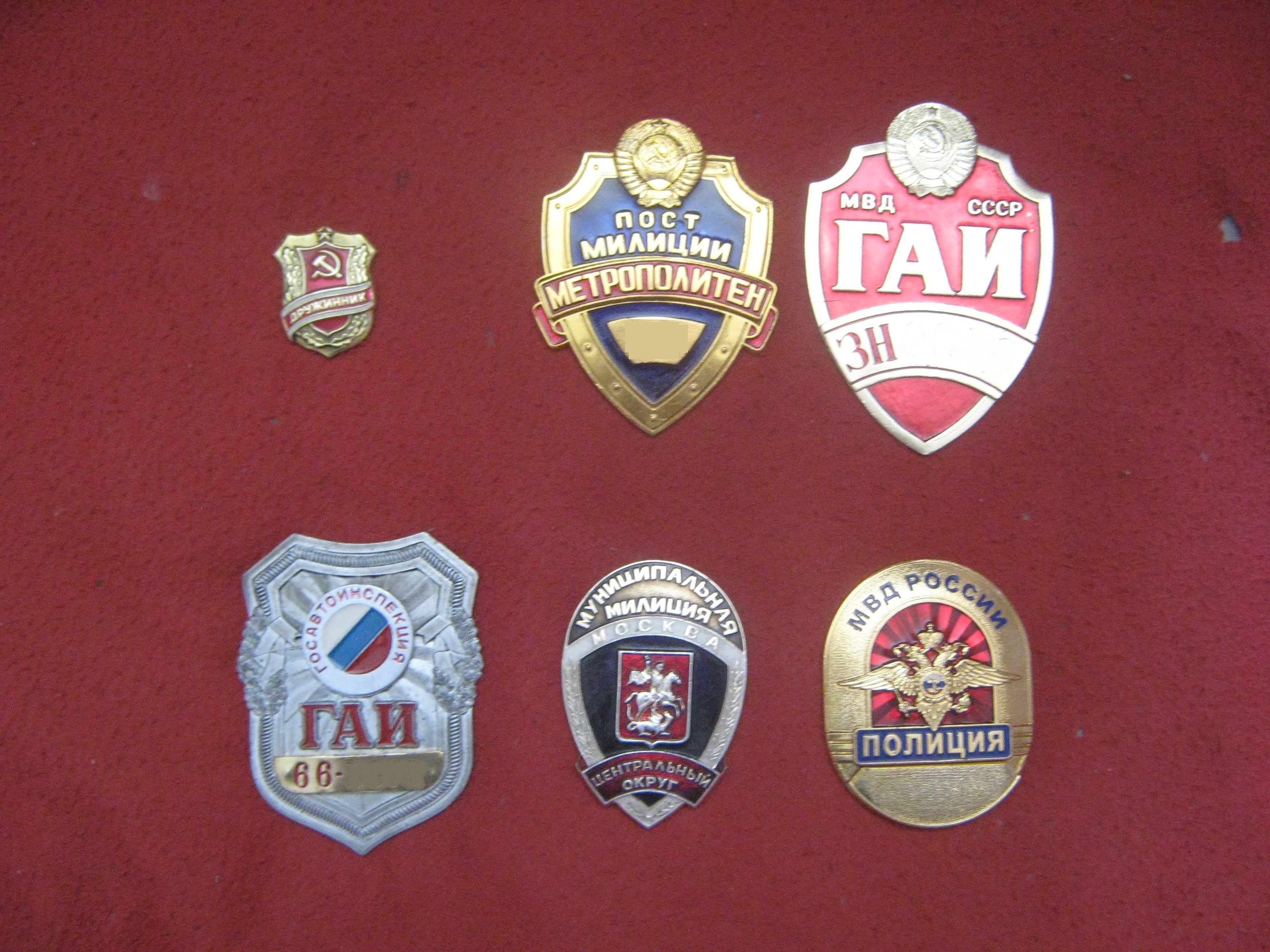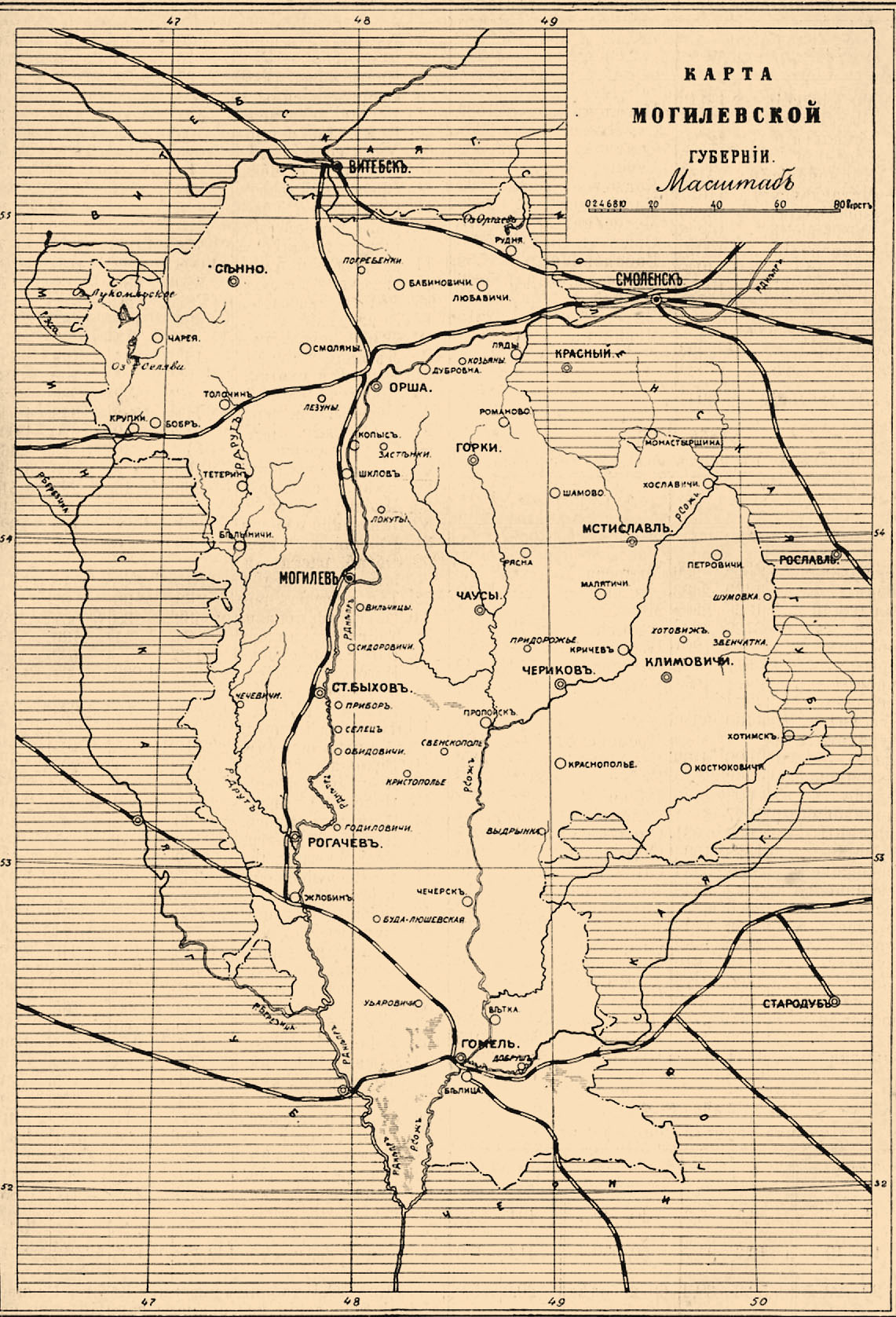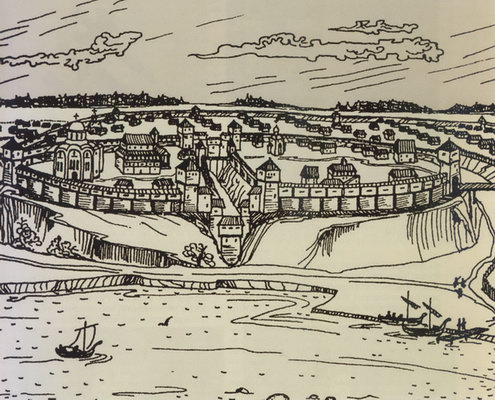|
Militsiya (Belarus)
The Militsiya of the Republic of Belarus ( be, Міліцыя Рэспублікi Беларусь, russian: Милиция Республики Беларусь) is a law enforcement agency in Belarus responsible for regular policing duties in the country. History The original Belarusian Militsiya was founded on 4 March 1917 during the events of the February Revolution, when prominent Bolshevik leader and politician Mikhail Frunze was appointed temporary police chief of the local Minsk civilian militia. Just three days later, various Belarusian cities began the process of creating police departments. The provisional regulations on the police were issued on 17 April 1917, establishing the Militsiya as an executive body of state power. In Belarus, as well as in newly formed Russian SFSR as a whole, the Militsiya replaced the previous Tsarist police services such as the Okhrana. On 10 November (28 October, O.S.) 1917, days after the October Revolution took place, the People's ... [...More Info...] [...Related Items...] OR: [Wikipedia] [Google] [Baidu] |
Militsiya
''Militsiya'' ( rus, милиция, , mʲɪˈlʲitsɨjə) was the name of the police forces in the Soviet Union (until 1991) and in several Eastern Bloc countries (1945–1992), as well as in the non-aligned SFR Yugoslavia (1945–1992). The term continues in common and sometimes official usage in some of the individual former Soviet republics such as Belarus, Tajikistan, Uzbekistan and Kyrgyzstan, as well as in the partially recognised or unrecognised republics of Abkhazia, South Ossetia, Transnistria, DNR and LNR. Name and status The name ''militsiya'' as applied to police forces originates from a Russian Provisional Government decree dated April 17, 1917, and from early Soviet history: both the Provisional Government and the Bolsheviks intended to associate their new law-enforcement authority with the self-organisation of the people and to distinguish it from the czarist police. The militsiya was reaffirmed in Russia on October 28 (November 10, according to th ... [...More Info...] [...Related Items...] OR: [Wikipedia] [Google] [Baidu] |
Belarusian SSR
The Byelorussian Soviet Socialist Republic (BSSR, or Byelorussian SSR; be, Беларуская Савецкая Сацыялістычная Рэспубліка, Bielaruskaja Savieckaja Sacyjalistyčnaja Respublika; russian: Белорусская Советская Социалистическая Республика, Byelorusskaya Sovyetskaya Sotsialisticheskaya Respublika or russian: links=no, Белорусская ССР, Belorusskaya SSR), also commonly referred to in English as Byelorussia, was a republic of the Soviet Union (USSR). It existed between 1920 and 1922, and from 1922 to 1991 as one of fifteen constituent republics of the USSR, with its own legislation from 1990 to 1991. The republic was ruled by the Communist Party of Byelorussia and was also referred to as Soviet Byelorussia or Soviet Belarus by a number of historians. Other names for Byelorussia included White Russian Soviet Socialist Republic and Belorussian Soviet Socialist Republic. To the wes ... [...More Info...] [...Related Items...] OR: [Wikipedia] [Google] [Baidu] |
UAZ Patriot
The UAZ Patriot (UAZ-3163) is a mid-size body-on-frame SUV produced by the UAZ division of SeverstalAvto in Ulyanovsk, Russia. It was introduced in 2005 and replaced the older UAZ Simbir (UAZ-3162). Extensive use of newer parts, large carrying capacity, good off-road capabilities and an affordable price (<15,000 ) predicted good sales in Russia. 12,011 units were sold in the year 2007. The SUV accommodates five adults and can carry about of cargo. Timeline In October 2011, UAZ announced the release of a limited edition SUV in honour of the 70th anniversary of the plant. Cars of the anniversary series have different exterior and interior trim details. In May 2012, the plant built a restyled model of the UAZ Patriot with a different dashboard ...[...More Info...] [...Related Items...] OR: [Wikipedia] [Google] [Baidu] |
Freedom Day (Belarus)
Freedom Day ( be, Дзень Волі, ''Dzień Voli'') is an unofficial holiday in Belarus celebrated on 25 March to commemorate the declaration of independence by the Belarusian Democratic Republic by the Third Constituent Charter on that date in 1918. It is also known as the 25-aha sakavika (, March 25th) day. Freedom Day has been celebrated as the Independence Day of Belarus by the Belarusian independence movement since the early 1920s. It is widely celebrated by the Belarusian diaspora. In the United States, governors and US presidents, including Dwight Eisenhower, Ronald Reagan, George H. W. Bush and Bill Clinton, have traditionally issued official greetings to the Belarusian American community on 25 March. The Belarusian opposition to the dictatorial regime of Alexander Lukashenko celebrates Freedom Day annually. The protests in Belarus are regularly accompanied by mass detention and torture of the protesters. The government does not recognize Freedom Day claiming ... [...More Info...] [...Related Items...] OR: [Wikipedia] [Google] [Baidu] |
October Square, Minsk
October Square (; be, Кастрычніцкая плошча) is a square in the center of Minsk, Belarus, which is located between Independence Avenue, Engels streets and International Street. To its east side there are areas limited to buildings of the Palace of Culture of Trade Unions, the Museum of the Great Patriotic War and the Minsk Palace of Republic. Around the Square is the Central House of Officers, the residence of the President of Belarus, and the Janka Kupała National Academic Theater. On the square there are the main metro stations in Minsk: Kastryčnickaja and Kupawaŭskaja. History In September 1952, a monument to Soviet leader Joseph Stalin was installed on the square with a height of 10 metres (33 ft). In 1957, between the main square and central park were government stands, from which the party and state leadership of the BSSR reviewed military parades and welcomed the demonstrations on International Workers' Day, Victory Day, and Octob ... [...More Info...] [...Related Items...] OR: [Wikipedia] [Google] [Baidu] |
Starshina
( rus, старшина, p=stərʂɨˈna, a=Ru-старшина.ogg or in Ukrainian transliteration) is a senior non-commissioned rank or designation in the military forces of some Slavic states, and a historical military designation. In army terminology, a starshina is equivalent to " Sergeant Major" (Most senior member at the company level) or a rank equal to a NATO OR-8. In naval terminology, ''starshina'' is a general term for junior and middle-ranking non-commissioned officers, similar in usage to "Chief Petty Officer". The word originates from the russian: старший, starshij, older, more senior, from russian: старый, staryj, old. Cossack Hetmanate Among Cossacks in Ukraine, ''starshyna'' was a collective noun for categories of military officers and state officials. It derived from the offices in the Polish-Lithuanian Commonwealth. Sharshyna was subdivided into: *General Starshyna (), headed by Hetman (or Quartermaster General as acting Hetman) **Quarterm ... [...More Info...] [...Related Items...] OR: [Wikipedia] [Google] [Baidu] |
Ministry Of The Interior Academy Of The Republic Of Belarus
The Ministry of the Interior Academy of the Republic of Belarus (; ) is a Belarusian military institution located in Minsk, Belarus. It is part of the Ministry of Internal Affairs (Belarus), Ministry of Internal Affairs of Belarus. History The Minsk High School of the Ministry of Internal Affairs of the USSR was established on 16 May 1958 on the basis of the preceding Minsk police academy. The main structural units of the school became the training faculty and the Vilnius and Riga faculty for long-distance learning. In September 1973, the school of was transformed into a regional faculty of the larger Academy of the Ministry of Internal Affairs of the USSR, based in Moscow. On 1 January 1976, the Minsk Higher School of the Soviet MVD was reestablished on the basis of this faculty. Political transformations of the second half of the 1980s necessitated the improvement of higher legal education, especially in the law enforcement sphere. Its main areas were therefore the fundamentali ... [...More Info...] [...Related Items...] OR: [Wikipedia] [Google] [Baidu] |
Vitebsk
Vitebsk or Viciebsk (russian: Витебск, ; be, Ві́цебск, ; , ''Vitebsk'', lt, Vitebskas, pl, Witebsk), is a city in Belarus. The capital of the Vitebsk Region, it has 366,299 inhabitants, making it the country's fourth-largest city. It is served by Vitebsk Vostochny Airport and Vitebsk Air Base. History Before 1945 Vitebsk developed from a river harbor where the Vićba River (Віцьба, from which it derives its name) flows into the larger Western Dvina, which is spanned in the city by the Kirov Bridge. Archaeological research indicates that Baltic tribes had settlements at the mouth of Vitba. In the 9th century, Slavic settlements of the tribal union of the Krivichs replaced them. According to the ''Chronicle of Michael Brigandine'' (1760), Princess Olga of Kiev founded Vitebsk (also recorded as Dbesk, Vidbesk, Videbsk, Vitepesk, or Vicibesk) in 974. Other versions give 947 or 914. Academician Boris Rybakov and historian Leonid Alekseyev have come to the ... [...More Info...] [...Related Items...] OR: [Wikipedia] [Google] [Baidu] |
Mogilev
Mogilev (russian: Могилёв, Mogilyov, ; yi, מאָלעוו, Molev, ) or Mahilyow ( be, Магілёў, Mahilioŭ, ) is a city in eastern Belarus, on the Dnieper River, about from the border with Russia's Smolensk Oblast and from the border with Russia's Bryansk Oblast. , its population was 360,918, up from an estimated 106,000 in 1956. It is the administrative centre of Mogilev Region and the third-largest city in Belarus. History The city was first mentioned in historical records in 1267. From the 14th century, it was part of the Grand Duchy of Lithuania, and since the Union of Lublin (1569), part of the Polish–Lithuanian Commonwealth, where it became known as ''Mohylew''. In the 16th-17th centuries, the city flourished as one of the main nodes of the east–west and north–south trading routes. In 1577, Polish King Stefan Batory granted it city rights under Magdeburg law. In 1654, the townsmen negotiated a treaty of surrender to the Russians peacefully ... [...More Info...] [...Related Items...] OR: [Wikipedia] [Google] [Baidu] |
Gomel
Gomel (russian: Гомель, ) or Homiel ( be, Гомель, ) is the administrative centre of Gomel Region and the second-largest city in Belarus with 526,872 inhabitants (2015 census). Etymology There are at least six narratives of the origin of the city's name. The most plausible is that the name is derived from the name of the stream Homeyuk, which flowed into the river Sozh near the foot of the hill where the first settlement was founded. Names of other Belarusian cities are formed along these lines: for example, the name Minsk is derived from the river Menka, Polatsk from the river Palata, and Vitsebsk from the river Vitsba. The first appearance of the name, as "Gomy", dates from 1142. Up to the 16th century, the city was mentioned as Hom', Homye, Homiy, Homey, or Homyi. These forms are tentatively explained as derivatives of an unattested ''*gomŭ'' of uncertain meaning. The modern name for the city has been in use only since the 16th or 17th centuries. History U ... [...More Info...] [...Related Items...] OR: [Wikipedia] [Google] [Baidu] |
Brest, Belarus
Brest ( be, Брэст / Берасьце, Bieraście, ; russian: Брест, ; uk, Берестя, Berestia; lt, Brasta; pl, Brześć; yi, בריסק, Brisk), formerly Brest-Litovsk (russian: Брест-Литовск, lit=Lithuanian Brest; be, links=no, translit=Berastze Litouski (Berastze), Берасце Літоўскі (Берасце); lt, links=no, Lietuvos Brasta; pl, links=no, Brześć Litewski, ), Brest-on-the-Bug ( pl, links=no, Brześć nad Bugiem), is a city (population 350,616 in 2019) in Belarus at the border with Poland opposite the Polish city of Terespol, where the Bug and Mukhavets rivers meet, making it a border town. It is the capital city of the Brest Region. Brest is a historical site for many cultures, as it hosted important historical events, such as the Union of Brest and Treaty of Brest-Litovsk. Furthermore, the Brest Fortress was recognized by the Soviet Union as a Hero Fortress in honour of the defense of Brest Fortress in June 19 ... [...More Info...] [...Related Items...] OR: [Wikipedia] [Google] [Baidu] |
Day Of The Police Of Belarus
The Day of the Police of Belarus (Belarusian: Дзень паліцыі Беларусі, Dzień palicyi Bielarusi; Russian: День белорусской милиции, Dyen byelorusskoy militsii) is a professional holiday of the Belarusian police (''Militsiya''). On 4 March 1917, Bolshevik politician and icon Mikhail Frunze was appointed the chief of the militia of the city of Minsk. This date is considered to be the birthday of the Belarusian police. The holiday was officially approved by decree of the President of Belarus Alexander Lukashenko on 26 March 1998. Traditions and events During the holiday, unit commanders as well as MVD leaders congratulate their subordinates on the holiday, with individual a presentations of awards, certificates, and medals to high performing employees. The Museum of the MVD is open on this date and gives special tours to tourists and employees. Police officers have also on occasion been given tours of state institutions such as Independence P ... [...More Info...] [...Related Items...] OR: [Wikipedia] [Google] [Baidu] |

.jpg)





